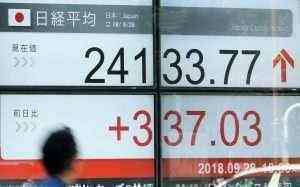Understanding Sales Variance Formula + Examples

Unfavorable variances refer to instances when costs are higher than your budget estimated they would be. As mentioned above, materials, labor, and variable overhead consist of price and quantity/efficiency variances. Fixed overhead, however, includes a volume variance and a budget variance.
Then divide that number by the original budgeted amount and multiply by 100 to get the percentage of your variance. For example, let’s say that Bob is a college student who pays for college expenses with a combination of wages from a job and a student loan. He budgets for $2,100 https://online-accounting.net/ in income and $2,000 in expenses for the month, which would leave him with a budget surplus of $100. During the month, he brings in $2,100 in income but incurs $2,075 in expenses thanks to an unplanned parking ticket, resulting in an actual budget surplus of only $25.
Dollar Variance Formula
In other words, this variance will be one reason why the amount of the company’s actual profits will be better than the budgeted profits. For example, a budget statement might show higher production costs than budget (adverse variance). However, these may have occurred because sales are significantly higher than budget (favourable budget). There are all kinds of different budgeting strategies that help management decide when to buy new assets, expand operations, or repair old machines.
An unfavorable labor quantity variance occurred because the actual hours worked to make the 10,000 units were greater than the expected hours to make that many units. This could occur because of inefficiencies of the workers, defects and errors that caused additional time reworking items, or the use of new workers who were less efficient. A favorable labor rate variance occurred because the rate paid per hour was less than the rate expected to be paid (standard) per hour. This could occur because the company was able to hire workers at a lower rate, because of negotiated union contracts, or because of a poor labor rate estimate used in creating the standard. Isolating changes and taking immediate action can make variance analysis a critical part of your operations.
Resources for Your Growing Business
Favorable sales variance happens when a company is able to sell their product at a higher price than what was budgeted. This is more likely in less competitive markets where companies are able to charge a premium for their goods and services. It‘s important to note that the two types of sales volume variance can be intertwined and impact each other. You can have both sales price variance and sales volume variance together, or one of each, at a time. Sales volume variance measures the difference between expected units sold and actual units sold.

Each favorable and unfavorable variance needs to be examined individually, as noted in the popcorn example in the video! Analysis is the key to making sure that increases (favorable variances) in revenue or increases (unfavorable variances) in expenses are appropriate. A variance should be indicated appropriately as “favorable” or “unfavorable.” A favorable variance is one where revenue comes in higher than budgeted, or when expenses are lower than predicted.
Steps for calculating the variance by hand
See this article on the four major advantages of standard costing to learn more. Asking yourself why a variance has occurred could help you plan your budget better. Timing variances can be reversed quickly though because when you were short in one period, you will likely be covered in the next period and eventually end up the right spot overall. Upgrading to a paid what is a trial balance membership gives you access to our extensive collection of plug-and-play Templates designed to power your performance—as well as CFI’s full course catalog and accredited Certification Programs. Using the variance formula and presenting this type of information is critical in FP&A. This variance would be presented on paper as either $200 favorable or simply $200.

We would have expected and additional $560 in payroll expense, so we have an unfavorable variance of $280 of additional expense, even adjusting for the additional revenue. To calculate a budget variance, go through each line item in your budget and subtract the actual spend from the original budget. If the budget variance is positive, you can see where the efficiencies or cost savings lie. If the budget variance is negative, then you know which areas need improvement. If a budget variance is unfavorable but considered controllable, then perhaps there is something management can do immediately to rectify the problem. If the budget item is not something management directly controls, then perhaps they need help crafting a new business strategy in order to survive and grow.
Budgets – Limitations and Potential Problems
At the end of the month, he calculates that the variance between his expected and actual income is $0 ($2,100 less $2,100). But the variance between his expected and actual expenses is $75 ($2,000 less $2,075). Quantity standards indicate how much labor (i.e., in hours) or materials (i.e., in kilograms) should be used in manufacturing a unit of a product. In contrast, cost standards indicate what the actual cost of the labor hour or material should be. Standards, in essence, are estimated prices or quantities that a company will incur.
22nd Century Group (XXII) Reports Second Quarter 2023 Financial … – GlobeNewswire
22nd Century Group (XXII) Reports Second Quarter 2023 Financial ….
Posted: Mon, 14 Aug 2023 07:00:00 GMT [source]
However, it is possible that some of these variances could result from standards that were not realistic. For example, if it realistically takes 2.4 hours to produce a unit of output, but the standard is set for 2.5 hours, there should be a favorable variance of 0.1 hour. This 0.1 hour variance results from the unrealistic standard, rather than operational efficiency. Adding the budget variance and volume variance, we get a total unfavorable variance of $1,600. Adding these two variables together, we get an overall variance of $3,000 (unfavorable).
With either of these formulas, the actual rate per hour refers to the actual rate of pay for workers to create one unit of product. The standard rate per hour is the expected rate of pay for workers to create one unit of product. The actual hours worked are the actual number of hours worked to create one unit of product.
- In many organizations, standards are set for both the cost and quantity of materials, labor, and overhead needed to produce goods or provide services.
- If the actual rate of pay per hour is less than the standard rate of pay per hour, the variance will be a favorable variance.
- In the case of revenues, a favorable variance occurs when the actual revenues are greater than the budgeted or standard revenues.
- If not, then the results may come from individual differences of sample members instead.
- Variance analysis can be summarized as an analysis of the difference between planned and actual numbers.
- Variance is a term that is often used in the business world, but many don’t really understand what it means.
This means that the combination of all revenue and expense variances created a $300 favorable variance for net income. Since the units of variance are much larger than those of a typical value of a data set, it’s harder to interpret the variance number intuitively. That’s why standard deviation is often preferred as a main measure of variability. A favorable variance indicates that the variance or difference between the budgeted and actual amounts was good or favorable for the company’s profits.

Seems a little quiet over here
Be the first to comment on this post
Write a response